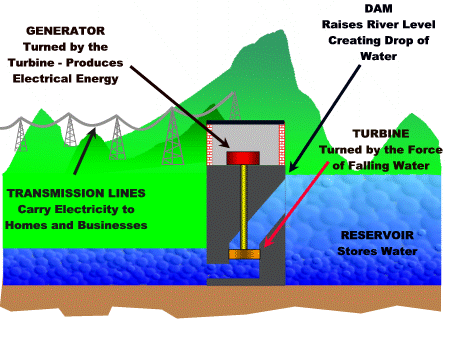We looked at generating electricity using hydroelectric and nuclear power stations today. Click on this image of a hydroelectric station to see how they work.
Nuclear fission occurs when a large nucleus splits into 2 or more smaller nuclei. In nuclear reactors, splitting of the large uranium nucleus is achieved by adding a neutron to make the large nucleus unstable.
Animation showing fission of U-235 by Stephan-Xp
The animation above shows a (blue) neutron destabilising a large (red) uranium nucleus to cause fission. When the 2 smaller nuclei (also red) are released, notice that three (blue) neutrons are produced as part of the fission process. These new neutrons can proceed to interact with other uranium nuclei and cause further fission to occur. If the reaction continues to take place, we have a chain reaction.
This youtube video uses mousetraps and table tennis balls to demonstrate a chain reaction. Notice how the reaction keeps going after the first ball is added and only stops when all the mousetraps have sprung.



